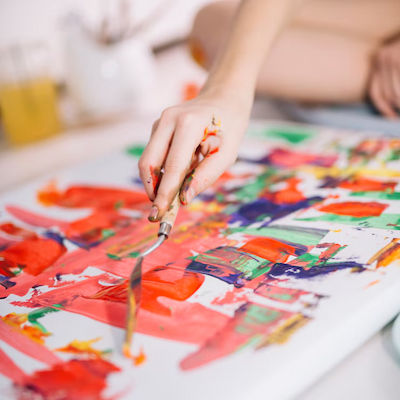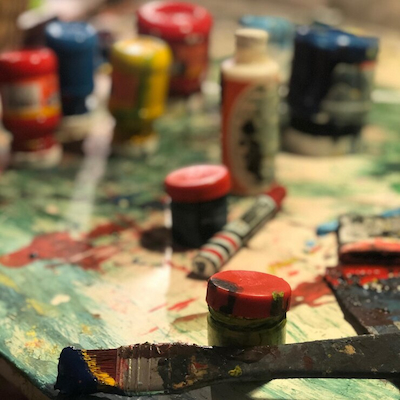
Watercolor is an art form that dates back centuries and is regarded as one of the oldest and most respected styles in painting. Originating in practices from Antiquity, watercolor has evolved through the years into one of the most versatile and accessible forms of artistic expression. Its fluid, transparent nature allows artists to explore a wide range of visual and emotional effects, making it a popular choice for beginners and professionals alike.
In contemporary art, watercolor continues to play a significant role—not just as a traditional medium, but as an innovative tool for creative expression. Modern artists challenge the conventions by using watercolor in unexpected ways and combining it with other media, resulting in works that are both modern and rooted in the rich history of painting. This article will explore watercolor techniques, its advantages as an artistic medium, and how to apply it in contemporary art.
How Watercolor Techniques Work in Painting
Watercolor techniques rely on the interaction of water, pigment, and paper. The paint typically consists of finely ground pigment suspended in a solution of gum arabic and water. The amount of water used determines the transparency and intensity of the colors. When applied to paper, the water evaporates, leaving a layer of pigment that can vary in saturation and tone based on the water-to-pigment ratio.
A common technique is the wash, where a uniform layer of diluted color is applied. This creates soft backgrounds or solid color fields. Gradual layering intensifies the color, while single washes produce subtle effects. The wet-on-wet method, where paint is applied to damp paper, results in smooth color transitions and ethereal effects.
Another important method is reserving areas—protecting parts of the paper to stay white or different in color using masking fluid, tape, or by “painting around” them. This allows for sharper contrasts. The dry brush technique—using a nearly dry brush to apply pigment—creates textures and fine details, enabling more expressive strokes.
Finally, combining these techniques is common among artists. Mixing traditional and modern methods allows artists to develop unique styles reflecting their vision and interpretation.

Advantages of Using Watercolor as an Artistic Medium
Watercolor offers many benefits:
Portability: Watercolor supplies—paints, brushes, and paper—are lightweight and easy to carry, making it ideal for outdoor painting, studio work, or home use.
Versatility: It supports a broad spectrum of styles—from detailed realism to abstract expression—thanks to its transparency and layering capabilities.
Accessibility: Materials are relatively affordable and easy to learn, making watercolor an excellent option for beginners. It can be used on various surfaces such as paper, wood, and fabric.
Therapeutic aspects: Watercolor painting requires focus and patience, often leading to relaxation. Many artists find it emotionally grounding and an effective form of self-expression.
How to Apply Watercolor in Contemporary Art
Contemporary application of watercolor can be enriched with:
Choosing the right materials: Opt for high-quality watercolor paints, appropriate brushes, and paper designed to hold water. Testing various brands helps personalize the experience.
Preparing the surface: Use high-quality watercolor paper with suitable weight and texture. Stretching the paper beforehand prevents buckling. The choice of paper texture can greatly influence the final effect.
Exploring modern techniques: Contemporary artists use spray applications, collage, and digital media integration, expanding watercolor into new territories.
Combining with other media: Watercolor can be paired with acrylics, graffiti, collage, and photography for dynamic mixed-media compositions that challenge perceptions.
Creating unique textures: Materials like salt, alcohol, or plastic wrap can be used to produce distinctive textures and patterns in the paint.
Learning from contemporary artists: Study artists who work in watercolor, attend workshops, and explore online resources to expand technique and creativity.
Applying watercolor in contemporary art is a rich, evolving practice—mixing technique, emotion, and innovation to express modern experiences.
How Watercolor Inspires Personal Growth and Mindfulness
Beyond aesthetics, watercolor has the power to promote well-being. The process of painting with watercolor demands focus, calmness, and the acceptance of imperfection—qualities often associated with mindfulness practices. Many artists describe their time spent with watercolor as meditative, helping them release stress and connect with their inner world.
By embracing the unpredictability of water and pigment, the artist cultivates a mindset that is flexible and open to change. This mirrors life itself—where control is limited, but beauty emerges when we flow with the present. Watercolor, in this sense, becomes not just an artistic journey but a path to emotional balance and mental clarity.
Watercolor and Emotional Expression: Painting What Words Cannot Say
One of the most powerful aspects of watercolor lies in its unique ability to convey emotion in ways that words often fail to do. The softness of a diluted wash, the intensity of overlapping hues, or the unexpected bleed of pigment across wet paper can capture subtleties of feeling—melancholy, serenity, nostalgia, or joy—that are deeply human and universally understood.
Artists across generations have turned to watercolor as a deeply personal outlet, using it not just as a medium, but as a language of the heart. Unlike more controlled forms of painting, watercolor encourages spontaneity and vulnerability. The very nature of water—fluid, unpredictable, uncontrollable—mirrors our inner emotional states. When an artist embraces these qualities rather than resisting them, the artwork becomes a mirror of the soul.
In therapeutic and community settings, watercolor has gained recognition as a healing practice. Workshops centered on emotional well-being often use watercolor because it lowers the barrier between thought and action, making it easier for individuals to express complex or hidden emotions. The act of watching color flow, mix, and evolve on the page can be calming, even transformative.
In contemporary art, many creators use watercolor to tackle themes like memory, identity, trauma, and resilience. It’s a medium that invites intimacy—and in doing so, forms a quiet but profound dialogue between artist and viewer. Whether painted in silence or alongside music, whether spontaneous or meticulously layered, watercolor can turn emotion into form, making visible what we too often feel in silence.
By exploring watercolor as a tool for emotional expression, we come to understand art not just as a visual experience, but as a deeply human one—capable of connecting us with ourselves and others in unexpected and powerful ways.
The Future of Watercolor in the Digital Age
While rooted in centuries of tradition, watercolor continues to evolve in surprising ways—especially in the digital era. New technologies allow artists to merge watercolor textures with digital illustration, animation, and virtual exhibitions. Applications and styluses now simulate watercolor washes with impressive realism, bringing the medium into the hands of new creators worldwide.
Social media platforms have also fueled a watercolor renaissance. Artists can now share their work instantly, teach techniques online, and collaborate with others across the globe. This digital fusion doesn’t replace traditional watercolor—it expands its reach. The future of watercolor is hybrid, dynamic, and as fluid as the medium itself.

Did You Enjoy Learning About Watercolor and Its Role in Contemporary Art?
Watercolor is more than just a painting technique—it is a gateway to emotion, spontaneity, and deep personal expression. Whether you’re a seasoned artist or just beginning your journey, exploring watercolor can unlock new perspectives and spark creativity. Its fluid nature teaches patience, its unpredictability nurtures adaptability, and its transparent beauty often leads to surprising and moving results.
If this exploration inspired you, don’t stop here. Dive deeper into watercolor history, study the techniques of iconic and contemporary artists, or simply pick up a brush and begin your own artistic experiment. Art is not only about mastering technique—it’s about finding your voice. Watercolor may very well be the medium that helps you discover it.
Frequently Asked Questions
What is watercolor and how did it originate?
Watercolor is a painting technique using water-soluble pigments mixed with gum arabic. It has ancient roots but became widely used in the 15th century.
What materials do I need to paint with watercolor?
You need watercolor paper, pigment (pans or tubes), brushes, water container, and cloth or paper towels for cleaning.
What are the main watercolor techniques?
Techniques include wash, wet-on-wet, wet-on-dry, dry brush, and making reserved white areas. Each creates unique visual effects.
How can watercolor be used in contemporary art?
Watercolor can be used alone or integrated with media like collage, ink, photography, or digital overlays to create modern works.
Where can I find inspiration for watercolor paintings?
Sources include art galleries, books, online communities, workshops, and everyday experiences such as nature, architecture, and daily life.

